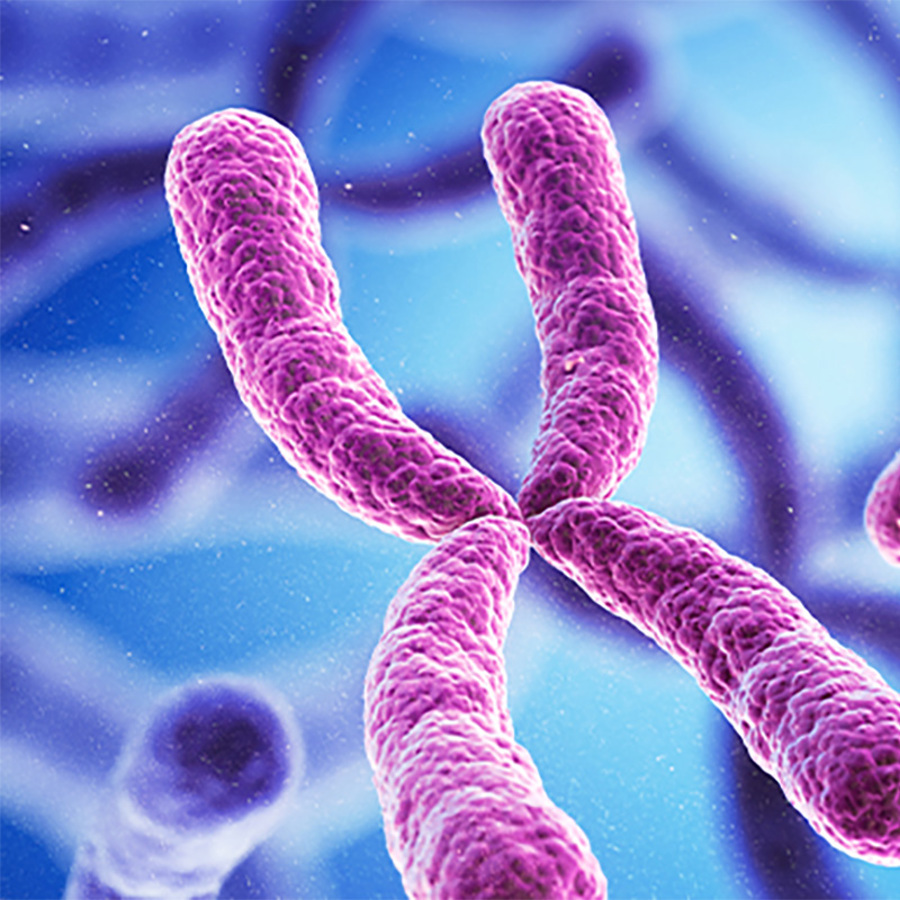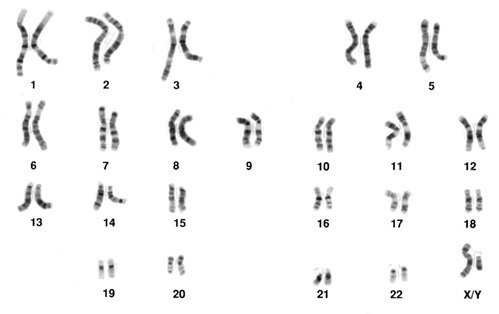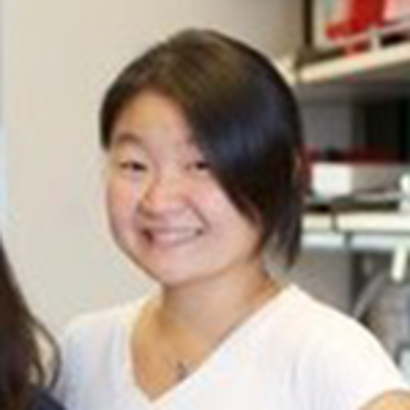
How do we know which chromosome a parent passed on. Is there a 50/50 chance of either?
March 23, 2016

- Related Topics:
- Chromosomes,
- Recombination,
- DNA basics
A curious adult from Oklahoma asks:
“If a woman has two X chromosomes, how do we know which X chromosome each of her offspring has? She received one X from her mother and one X from her father. Will her offspring receive the X from her mother or the X from her father? Is there a 50/50 chance of either? Or does it depend upon the offspring's sex- i.e. females receive X chromosome donated from grandmother, males receive X chromosome donated from grandfather? Do we know for sure?”
Believe it or not, a woman actually passes some of each of her X’s to her kids. And each child gets different parts of each X.
So whether you are a boy or a girl, you got some of your maternal grandma’s X and some of your maternal grandpa’s X. You have a unique combination of the two of them.
It is a different story for the DNA from dad. Dad has an X and a Y, and he passes one or the other to a child virtually unchanged. If he passes an X, he has a daughter, and if he passes a Y, he has a son.
For the rest of the answer, I’ll go over why X’s from mom are passed down differently than X’s from dad. As you’ll see, it has to do with something called recombination.
DNA Comes in Pairs
With a couple exceptions, we actually get half our DNA from mom and half from dad. That’s because DNA is organized in 23 pairs of long strands called chromosomes. Mom will give you one chromosome of each pair, while dad gives the other.
DNA is made up of units of information called genes. We have genes for hair color, eye color, and so on. If DNA is the recipe book for life, you can think of chromosomes as the pages, and genes as the individual instructions.
Although the two chromosomes in a pair both code for the same genes, they are also slightly different. After all, not everybody makes, say, brownies the same way – someone may use nuts, while another person might not.
Just like brownie recipes, genes are written out in “letters.” But the genetic alphabet is much simpler than most others—it has only 4 letters! So our DNA is arranged in a sequence of “A’s,” “T’s,” “G’s” and C’s,"
The exact sequence differs between the chromosomes of each pair. The chromosome that mom gives you will be a little different in sequence than the chromosome that dad gives. The two DNA sequences may conflict, and one may win out, or they may interact to create new features.
The end result is that mom and dad both contribute to every gene that makes us who we are, so nobody feels left out!

Special Chromosomes
One chromosome pair is important for giving us features that make us a boy or a girl. While the other 22 pairs of chromosomes are a little different in DNA sequence, these sex chromosomes are so different that they come in two distinct flavors – X and Y.
With rare exceptions, having two X chromosomes makes you a girl, and having one X and one Y chromosome makes you a boy (biologically). Let’s see how these chromosomes are passed on:

Here I’ve drawn mom’s sex chromosomes as yellow X’s, and dad’s sex chromosomes as a light blue X and a light blue Y. Because mom gives one chromosome of each pair, and dad gives the other, a boy will always get his X from mom, because he’s got the Y from dad. And a girl will always get one X from mom and one X from dad.
From this picture, you can’t tell which X the mom will give her daughter. But she’ll actually give a little bit of both! How is this possible?
Now Things Get More Complicated…
As it turns out, one more thing has to happen before most DNA gets passed down. The mom’s two X chromosomes exchange parts, or recombine, like so:

Here I’ve drawn the X chromosomes in different colors, purple and yellow for mom, and dark blue for dad. Not only will this make them easier to follow, but it will also more accurately show what happens in real life. Different chromosomes have slightly different sequences.
As you can see, mom’s X chromosomes have exchanged parts. Again, because mom’s two X’s are slightly different, this recombination gives new combinations of DNA, and each child gets a different combination. Her daughter got mostly purple with some yellow tips and her son got mostly yellow with purple tips.
Also, the daughter’s and son’s X’s don’t have to be mirror images of each other. I just drew them this way for simplicity. There are many different combinations of the mom’s X chromosomes they can receive!
That’s because there are almost an infinite number of ways that mom’s two X’s can swap DNA. And this is true for the other 22 chromosome pairs in both mom and dad.
This recombination evolved to make individuals in a species different from each other, so that if something were to happen, the species as a whole would survive. Someone somewhere will have the lucky combination that helps them survive!
You may have noticed that the dad’s X doesn’t recombine with the Y. This is because recombination requires that two chromosomes share a lot of their DNA. The X and Y are just too different from one another.
Another reason is that if the two did recombine, important information might be lost. So much information might be lost, that the resulting child might not survive.
Tracing DNA Back in Time
Because the X’s recombine, however, a cool thing that ends up happening is that you’d have parts of your maternal grandmother’s X chromosome, and parts of your maternal grandfather’s X chromosome. This would be the case no matter if you were a boy or a girl.

As you can see, both of the daughter’s children, regardless of sex, have pieces of X chromosome from their grandparents’ purple, yellow, and dark blue X’s. Because of recombination, your X is a happy mix of your maternal grandparents’ X’s!
Note that the son’s son has none of his paternal grandma’s X and that he has the same Y as his paternal grandpa. This does not mean he is not related to his paternal grandma.
Remember, he has 22 other pairs of chromosomes. One of each of those pairs has DNA from both the paternal grandma and paternal grandpa.
Now we know where we get our X’s, and for that matter, where we get our other chromosomes. Recombination is what lets us share DNA with our ancestors, X’s included.

Author: Jenny Hsu
When this answer was published in 2016, Jenny was a Ph.D. candidate in the Department of Genetics, studying stem cells and regeneration in Julien Sage’s laboratory. She wrote this answer while participating in the Stanford at The Tech program.
 Skip Navigation
Skip Navigation
